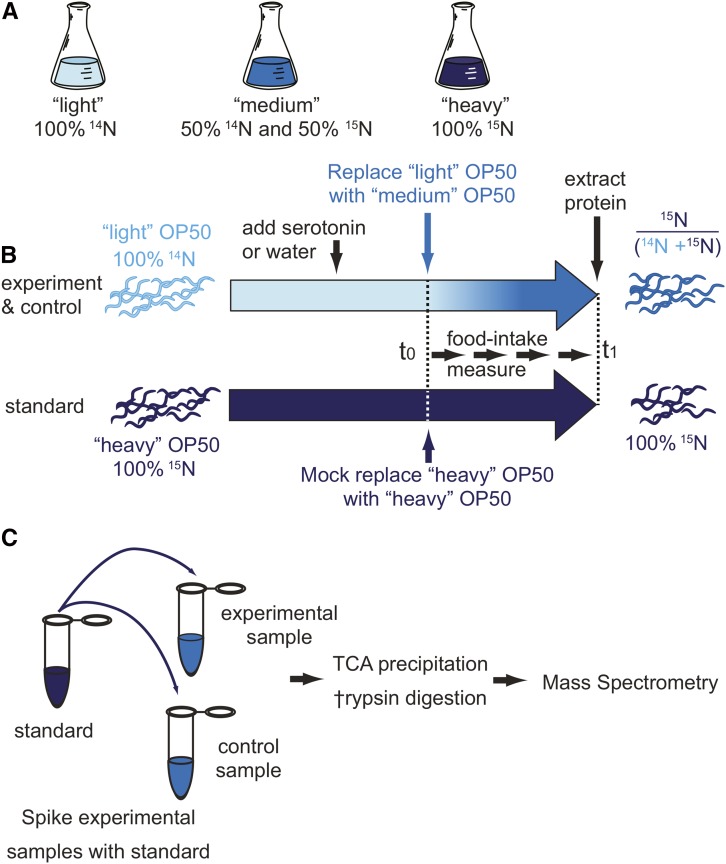Figure 4.
Measurement of nutrient absorption in C. elegans using metabolic labeling coupled with quantitative mass spectrometry. To metabolically label worms, (A) we first grew three different OP50 “foods” by culturing OP50 bacteria in minimal media enriched with either 100% (14NH4)2SO4, 50% (14NH4)2SO4 + 50% (15NH4)2SO4, or 100% (15NH4)2SO4. These foods were termed “light,” “medium,” and “heavy,” respectively. Second, we generated a population of heavy worms. These worms were fed heavy OP50 for three generations to ensure fully enriched 100% (15NH4)2SO4 worm proteins. (B) Third, light and heavy worms were synchronized and cultured in light and heavy food, respectively. The heavy worms were used as an external standard to facilitate the comparison of different experimental samples. 14N worms were given either the drug of choice or water at day 1. At day 5, or the start day for the pulse labeling, worms were washed and the food was switched from light to medium for drug- or water-treated worms, and from heavy to heavy for the mass-spec-standard worms. The worms were harvested on day 7 after pulse labeling and prepared for mass spectrometry analysis. (C) Preparation of samples for mass spectrometry analysis. For each experiment an external standard was generated, derived from heavy worms cultured in parallel. Each sample lysate was spiked with the external standard. Proteins were extracted by TCA precipitation, digested with trypsin, and analyzed by LC-MS/MS.

